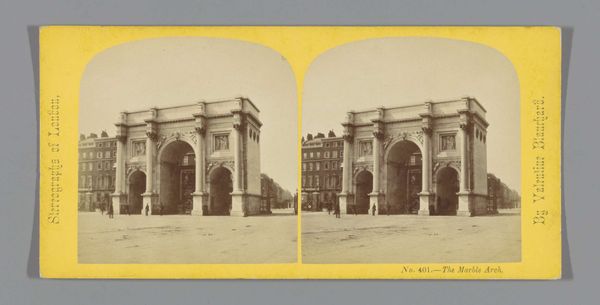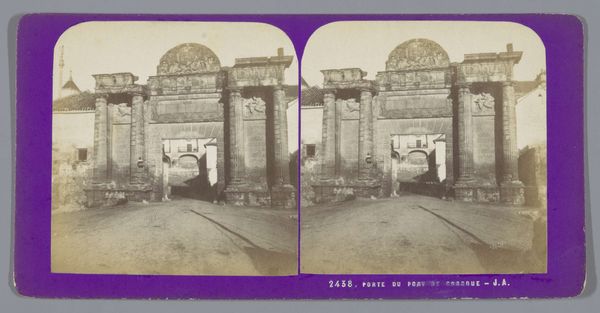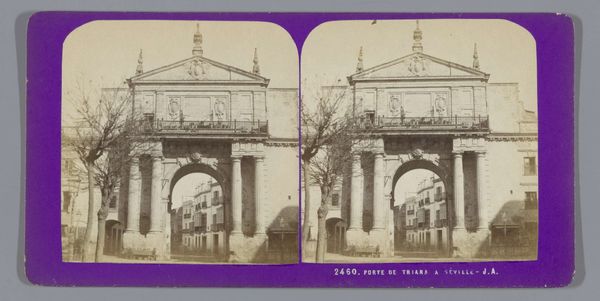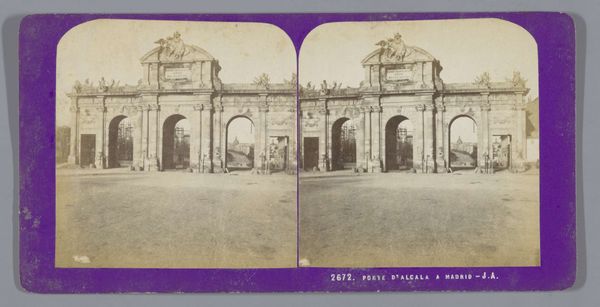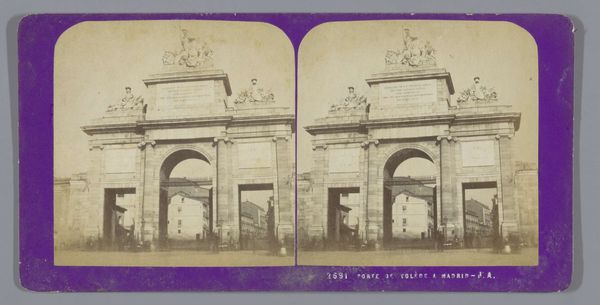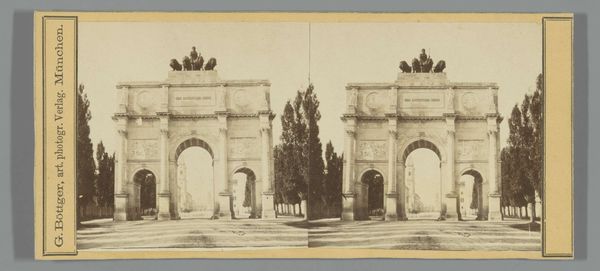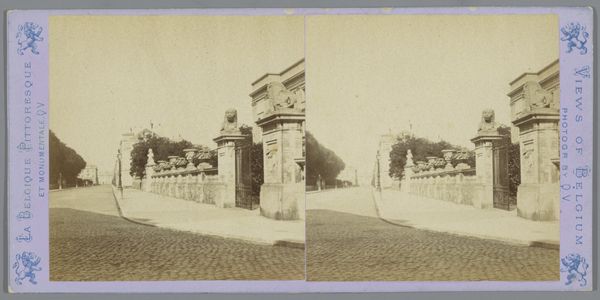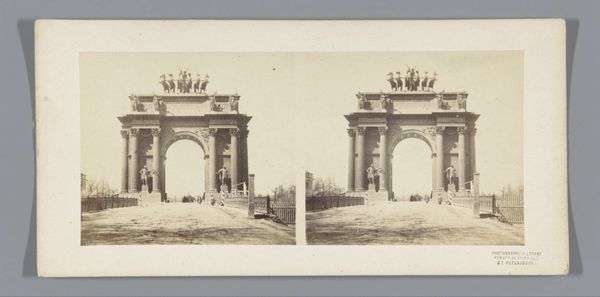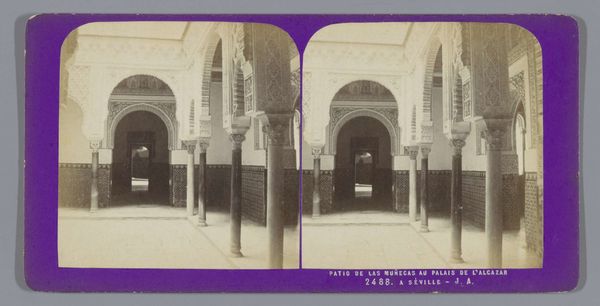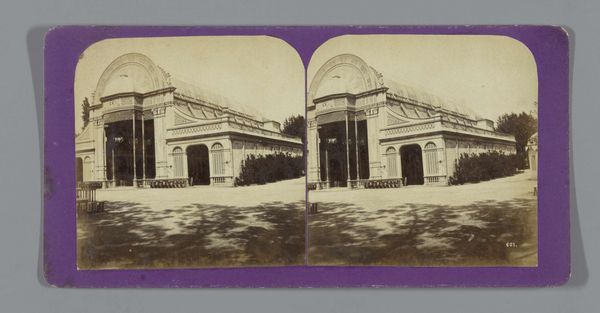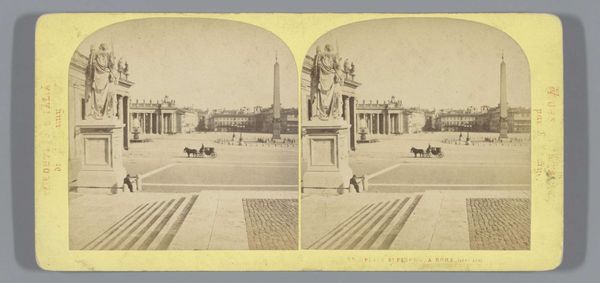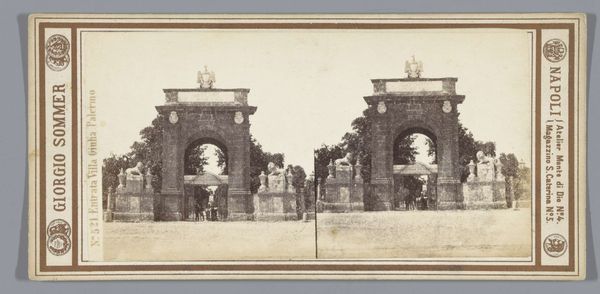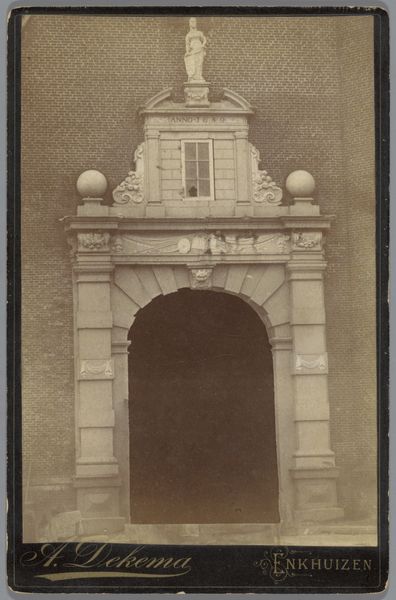
print, photography, gelatin-silver-print
# print
#
landscape
#
photography
#
gelatin-silver-print
#
cityscape
#
realism
Dimensions: height 85 mm, width 170 mm
Copyright: Rijks Museum: Open Domain
Editor: Here we have Jean Andrieu's "View of the Puerta de San Vicente in Madrid", created sometime between 1862 and 1876 using a gelatin-silver print. It feels very formal, almost staged. I'm struck by how the materials and the photographic process itself, constrain and also define what can be depicted. How does that interplay strike you? Curator: It’s fascinating to consider the gelatin-silver print in its historical context. Think about it: the rise of photography coincided with industrial advancements and new means of production. It democratized image-making but also introduced new forms of labor to support it. This particular print shows us not only the Puerta, but also reflects the social changes surrounding how images were manufactured, circulated, and consumed at that time. The subject becomes almost secondary to the technology that allowed it to be captured. Editor: So, the *making* of the image is as significant as the *image* itself? Are you suggesting the photographic medium shaped both access and perception? Curator: Precisely. The gelatin-silver process enabled mass reproduction and wide distribution. Ask yourself, who was the intended audience and how would their class impact the means for consumption? Were these mass produced prints meant to replace traditional modes such as painting or etchings, creating new visual expectations of “realistic” representation. The materials, labor and technology required to create this artwork impacted how cities were then seen and understood. What do you make of that relationship between access, perspective and materiality? Editor: That makes me consider who had access to commissioning photographs of Madrid in this period. I hadn't really thought about how that influences our perception of what was considered "important" enough to photograph. Curator: And what can we interpret from the choice of gelatin silver? The materiality is one where photography emerged as the people's painter, challenging how one experiences fine art. Editor: I am so appreciative to come away today thinking about access and how we interpret images by not just the image itself, but what all goes into making it.
Comments
No comments
Be the first to comment and join the conversation on the ultimate creative platform.
